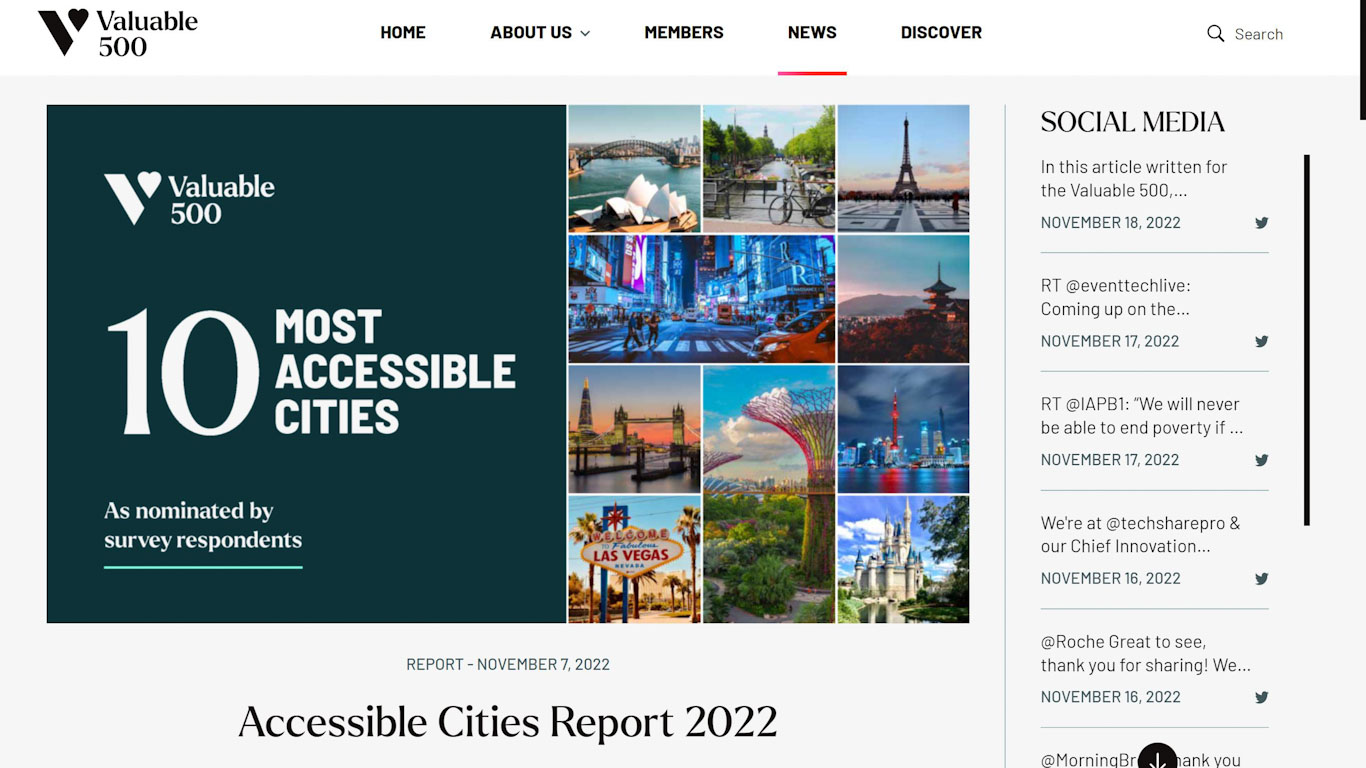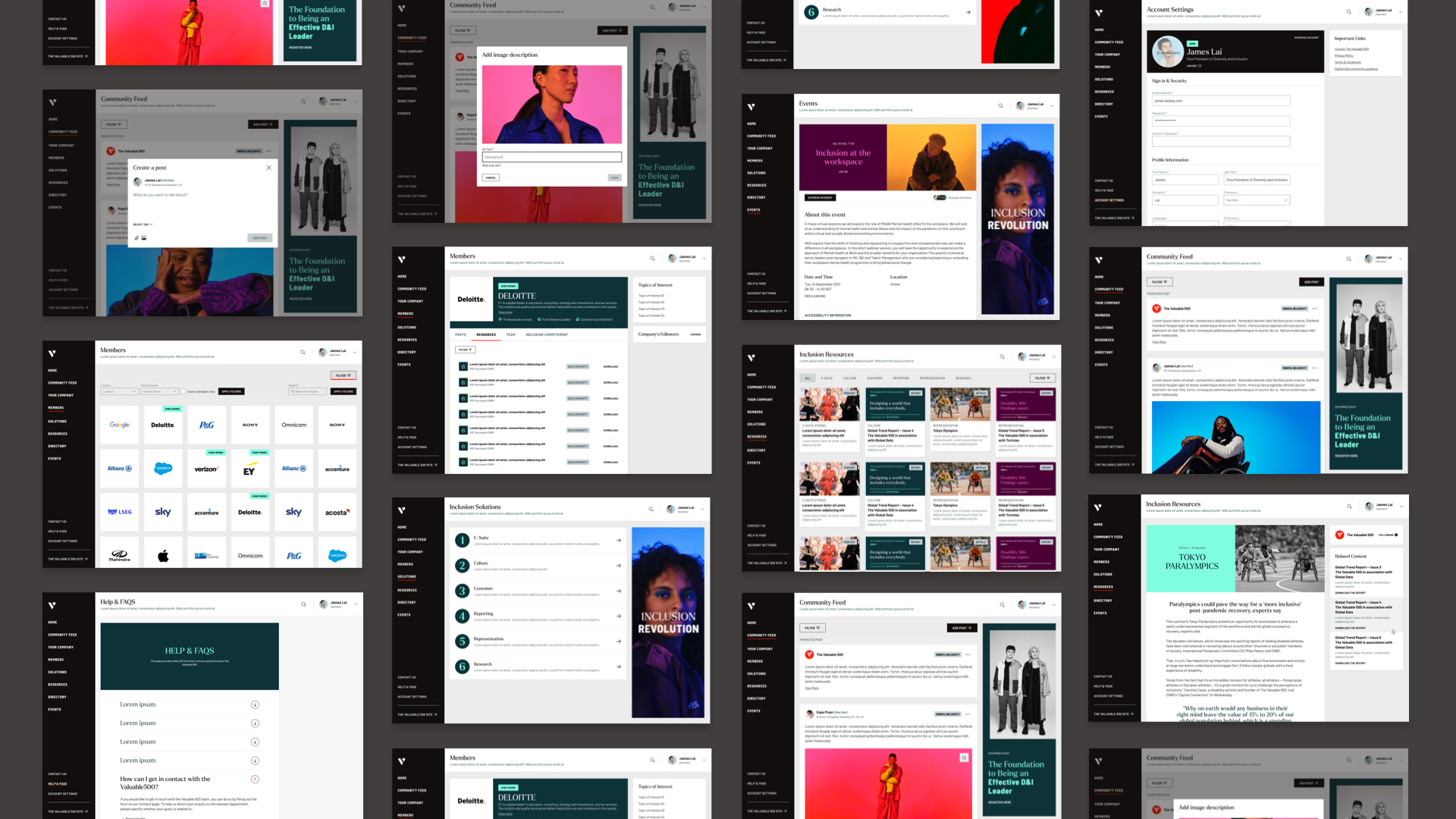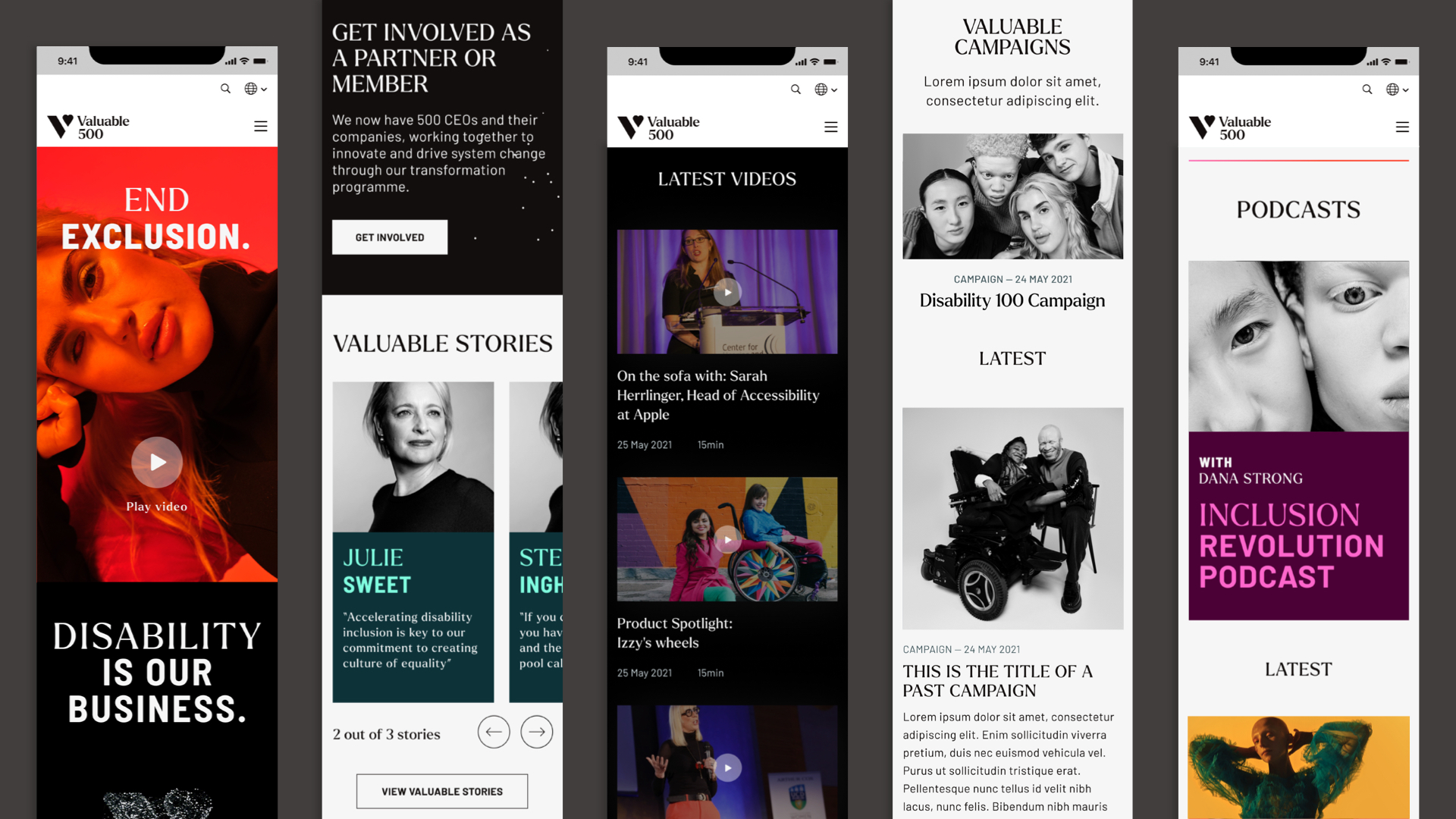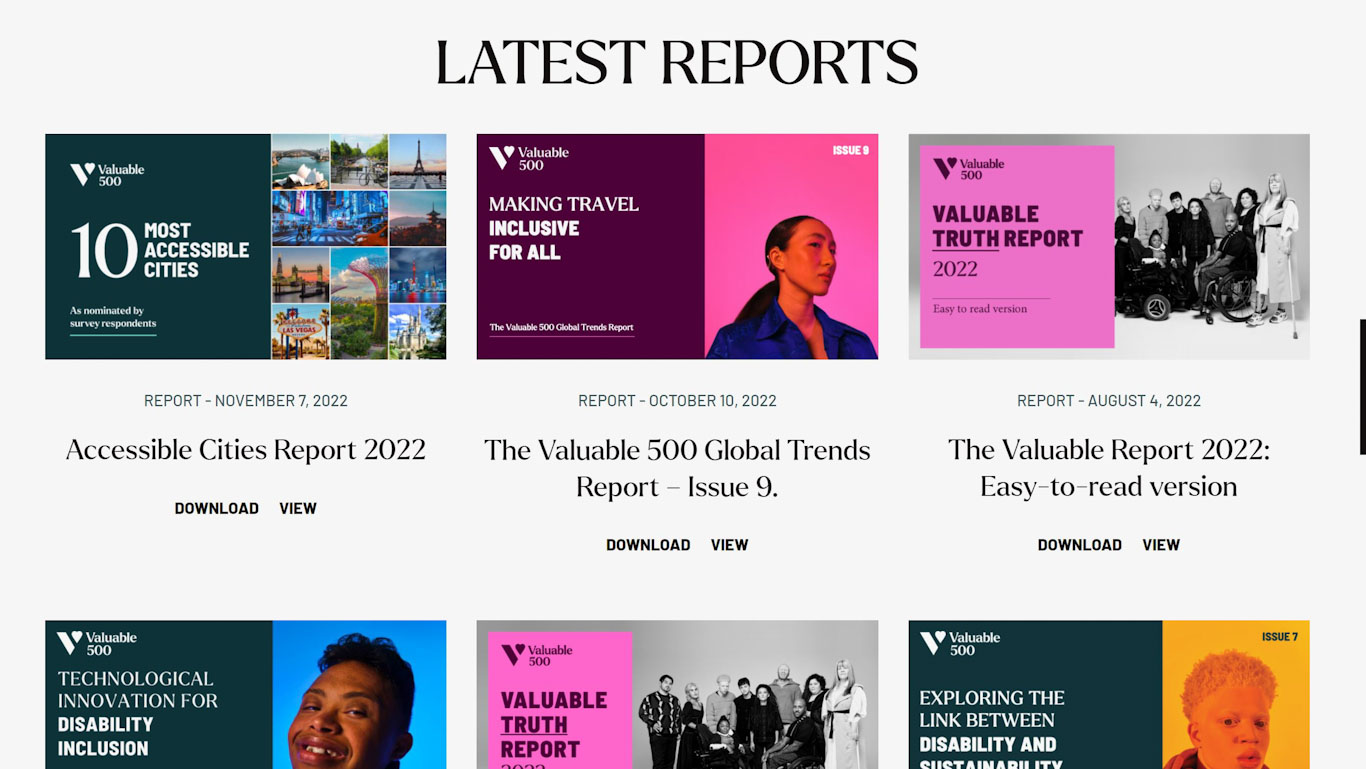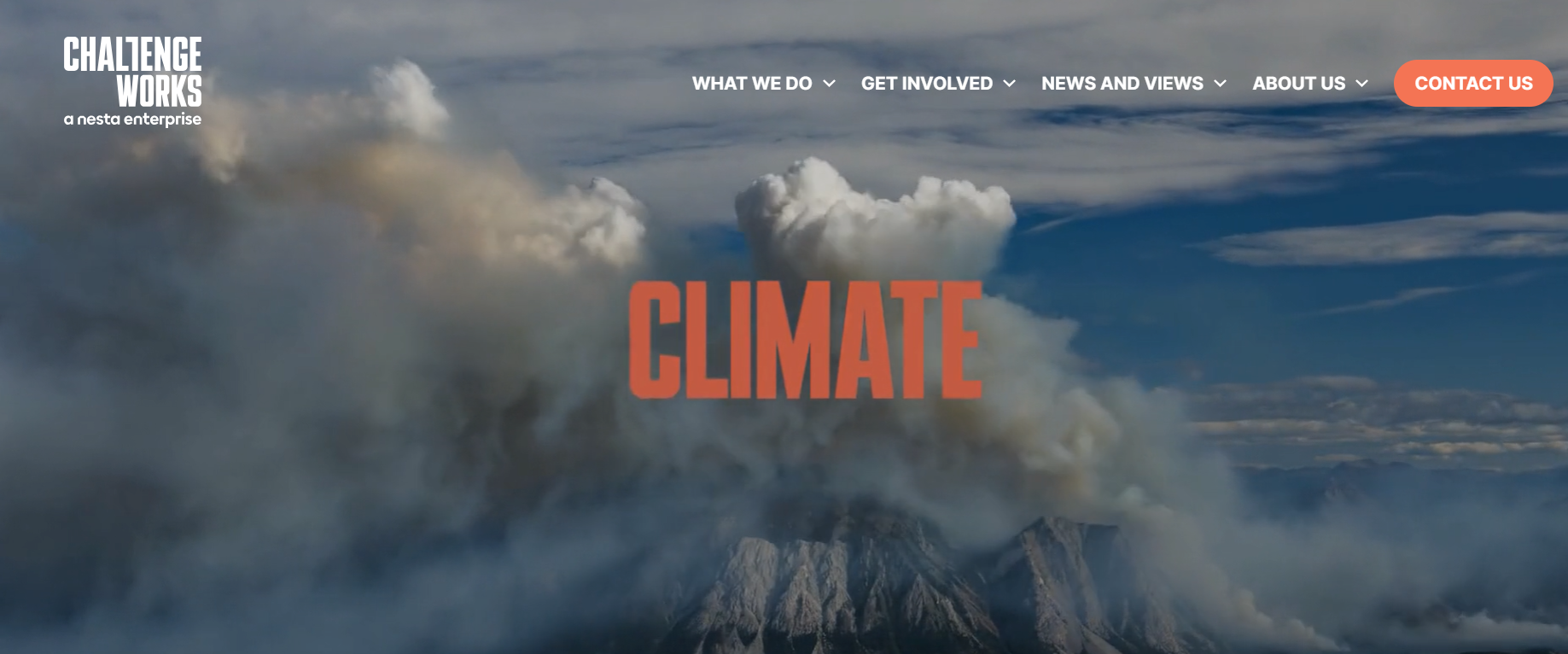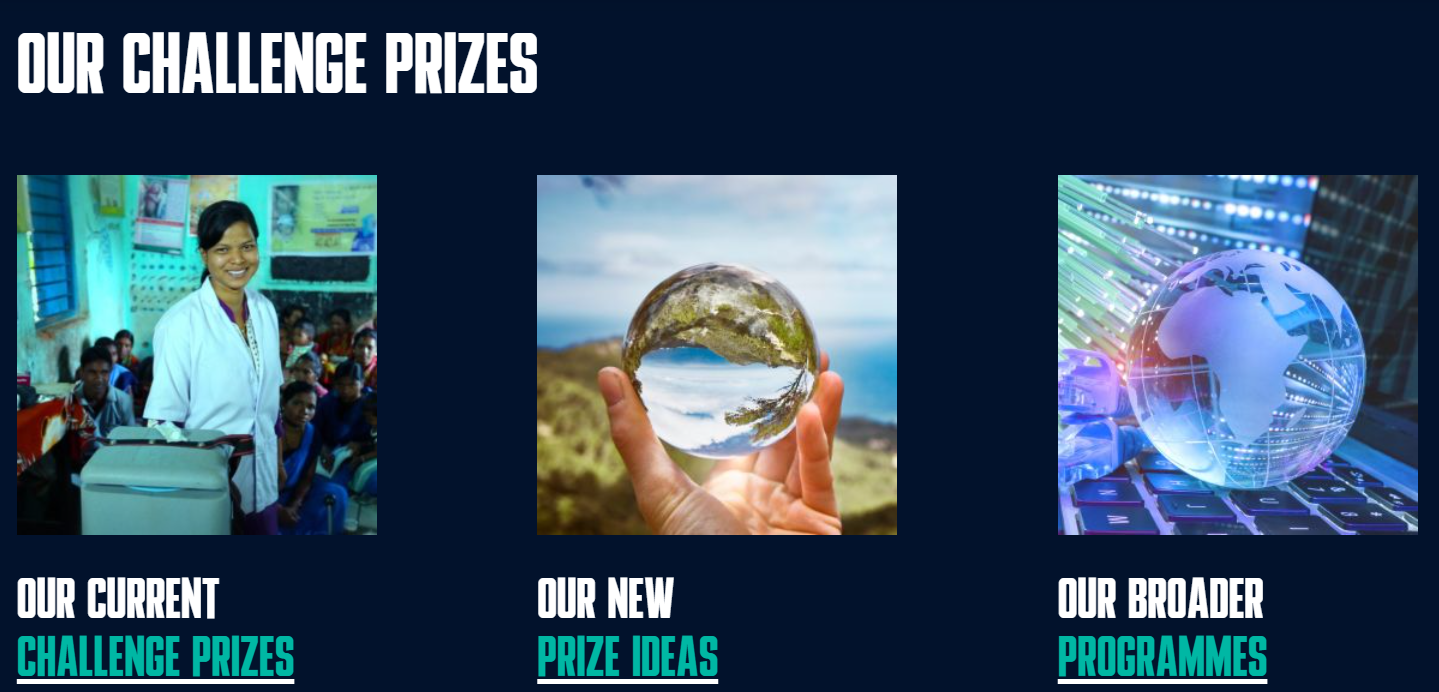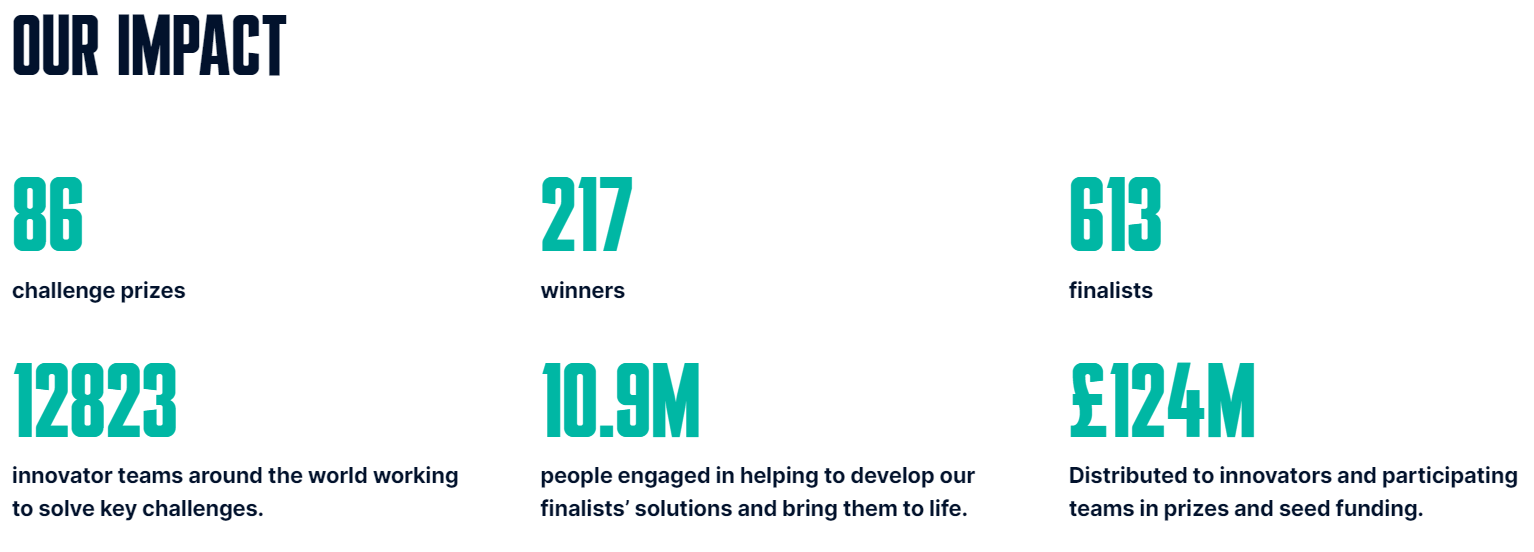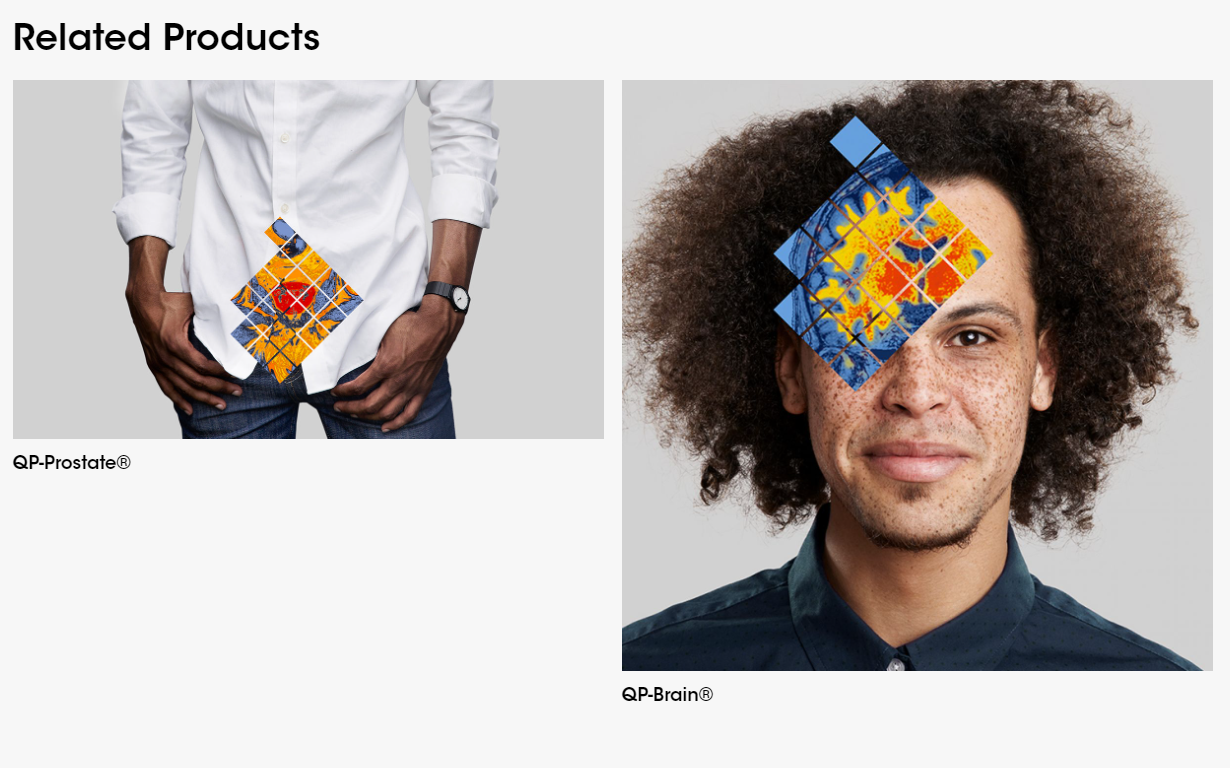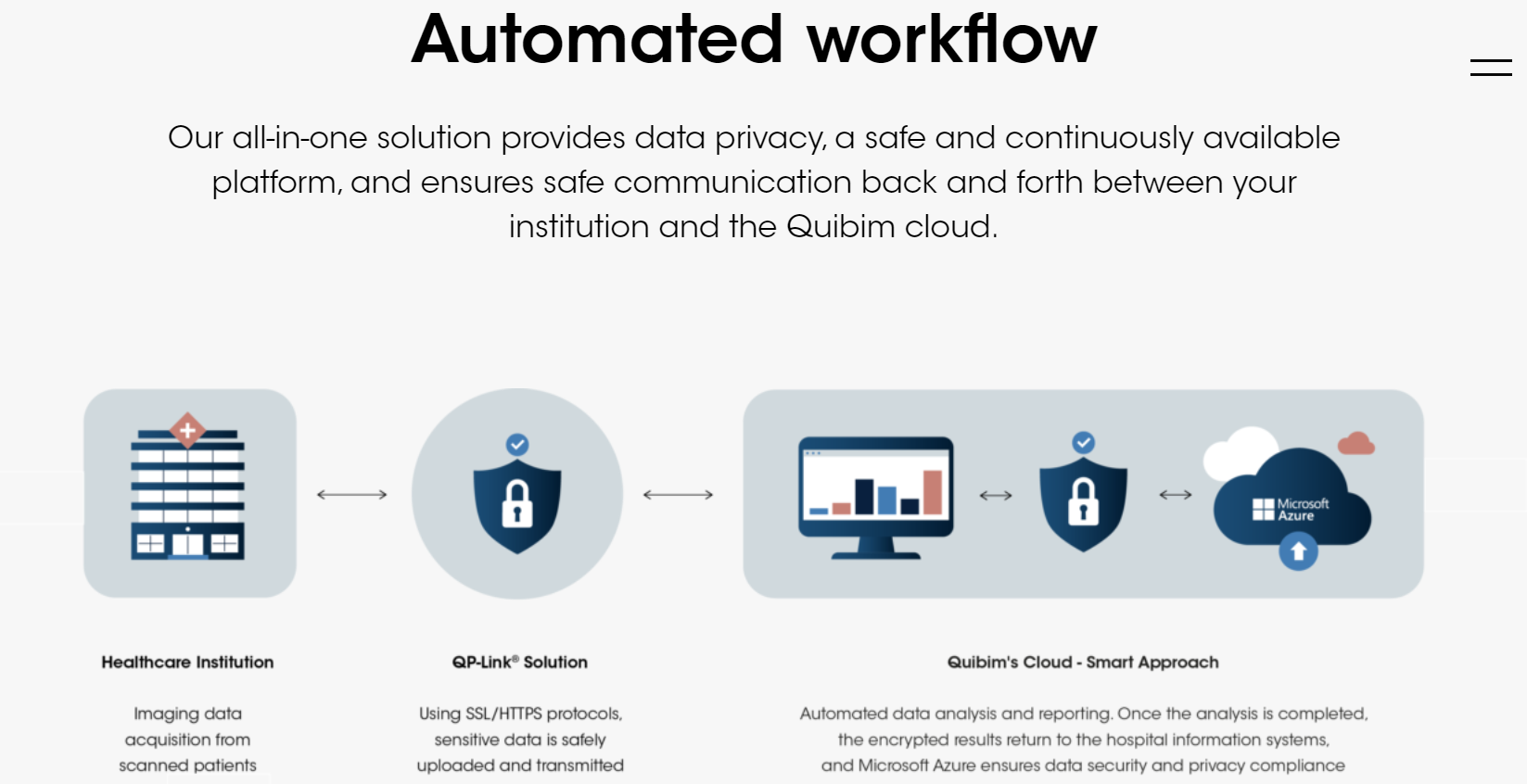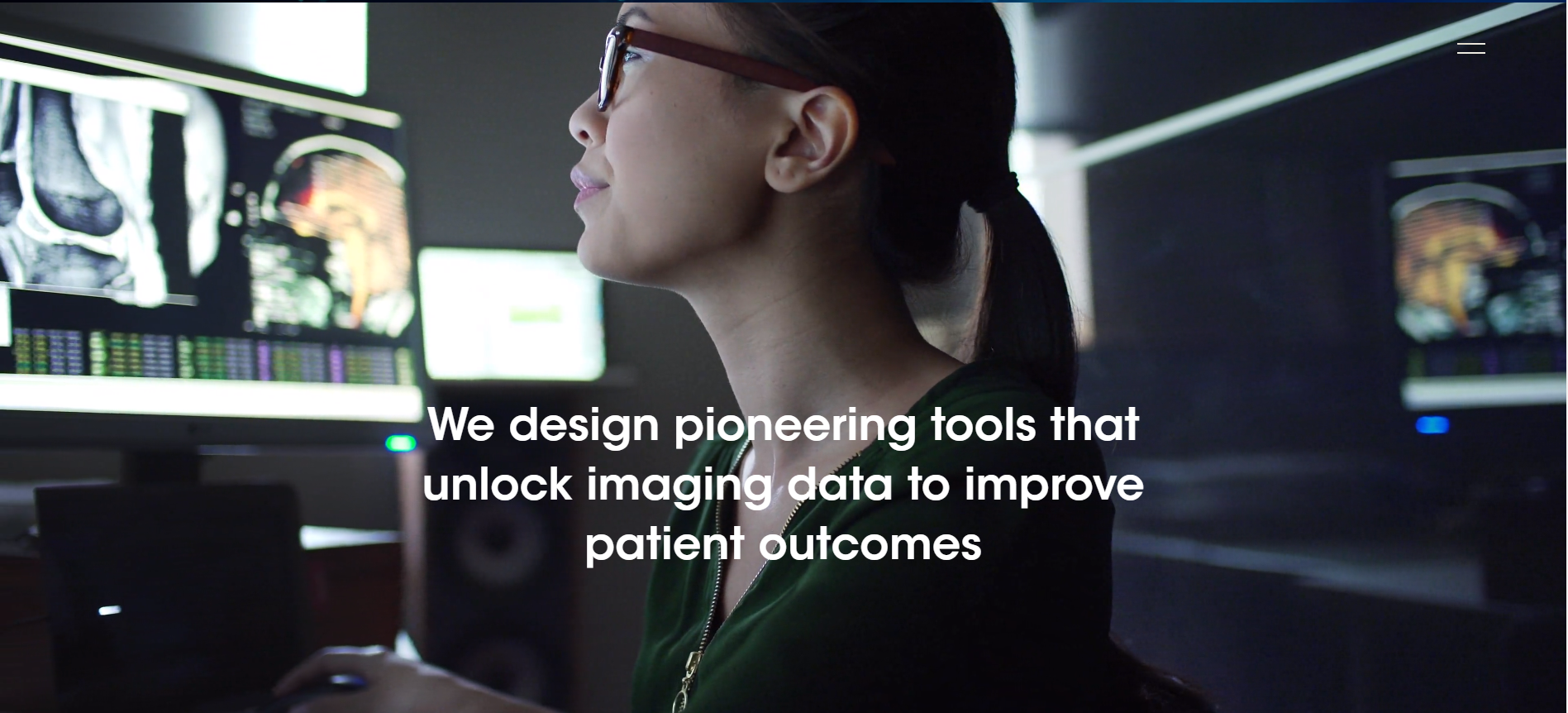Charity
Education and Childcare
Nonprofit organisation
St Margaret’s is a hospice based in Somerset, caring for individuals aged 18 years and above facing life-limiting illnesses.
The hospice is known for the strong, personal connections they build with the people they care for. But behind the scenes, disconnected systems and outdated tools were making that work harder. Staff spent too much time chasing information, slowing down their fundraising efforts.
St Margaret’s struggled with their incumbent CRM system. Reports took forever and income tracking was painful. It was hard to see exactly what data they had and whether it was GDPR-compliant. This made fundraising harder and added unnecessary stress.
Face-to-face conversations with the team and senior leaders helped us get a clear idea of how the new CRM needed to work. It had to match their day-to-day processes and support clear, accurate reporting for funders. They needed tools that fit how they worked – not a generic system.
Every detail was mapped out to make sure the new system worked in practice, not just on paper.
Data capture and storage were shaped to help teams work together more easily. The system was kept simple so everyone could use it, even those less confident with tech.
The finance team needed to track income for reports and audits and pass that information on to the accountancy team without confusion. The plan made sure this would be smooth and reliable.
A phased approach helped keep things stable while large amounts of data were transferred. This gave staff time to adjust and reduced the risk of setbacks.
A first version of the new system was set up, with all the important information clearly organised so nothing would be missed. St Margaret’s had been on the incumbent CRM system for more than 20 years! A steady hand was needed to migrate everything correctly. Breaking the migration into smaller steps also made it easier to ensure GDPR compliance (by standardising consent across data from various sources and ensuring that the gathering and recording of consents was robust and auditable)
A pilot group tested the system first, identifying opportunities for enhancement, before the full migration. Then the entire database was moved over, with face-to-face training easing the transition for everyone. Each step was explained clearly, so staff felt confident and not overwhelmed by the change.
St Margaret’s now has a clear view of all fundraising data. They don’t wade through spreadsheets or wonder if records are up to date. Income tracking is straightforward, and reporting takes a fraction of the time.
Staff can see exactly who has donated, when and how that fits into each campaign, with their new CRM, Beacon. This means they can plan new fundraising efforts with confidence. Sensitive data is compliant with GDPR which removes the stress of unclear or outdated records.
The hospice team feels more in control. Day-to-day admin is easier and they have more time for what really matters: providing exceptional care to those who need it most.
"Telescopic supported our Hospice through the configuration and implementation of a new CRM after 20+ years of using an outdated legacy system. The team were brilliant. Responsive, insightful and expert in their advice. They made a culturally difficult project accessible and inclusive and helped alleviate colleague worries during a considerable change management process. A pleasure to work alongside and nothing ever felt like too much trouble, despite some of our strange requirements!"
Joanna Hall, St Margaret’s Hospice Care
Tight budget? A limited timeline or any other obstacles preventing you from moving forward? We’re here to get you unstuck!
Valuable 500 is a global collective of 500 CEOs and their companies, innovating together for disability inclusion. Its aim is to recognise the unique value of the 1.3 billion people living with a disability, connect with them and build a more inclusive society.
We teamed up with brand consultancy Saffron to plan, develop, test and implement a range of accessible products that would form the core of the award winning nonprofit website and the Valuable 500 digital portfolio.
Turns out its not just a triumph of accessibility, but also great for our SEO! *Throws in another mention of being an award winning digital agency in London*
We wanted to create an environment for The Valuable 500 that helps them to end disability exclusion by uniting people to spark action and accelerate change. Our task was to help them connect the leaders of the world’s most influential companies, D&I teams and people with disabilities, creating an inspiring digital ecosystem capable of fostering inclusiveness.
This ecosystem would comprise:
A web-app for Valuable 500 members, where they could find all the tools needed to fast-track their disability inclusion journeys. This platform would also help members build connections, share knowledge and ultimately accelerate change through access to resources, events and D&I specialists.
A public website would showcase the latest global trends, news and innovations regarding disability and inclusion. It would provide a platform for inclusive conversations to raise awareness by giving access to information for everyone and act as one of the main touchpoints for The Valuable 500 to express and bring to life their brand, purpose and mission. The platform should also include a section for the disabled community to get their voices heard.
Working as a multi disciplinary team, we assessed the full spectrum of requirements and established a blueprint for delivery. This included iterative wireframes, user stories and technical specifications. We defined the initial elements of the platforms, how users would interact with them and mapped public-facing and back-office functionality. We selected a tech stack which would provide a robust foundation, whilst offering flexibility and scalability as the sites and their audiences grew.
Implementation included configuration of a highly flexible, modular CMS to manage complex content requirements on both the public website and the private members app, and which provides capacity for scaling. The system integrates with the Microsoft Dynamics CRM to manage members details efficiently and provide one source of truth for The Valuable 500 members data.
We worked hard to make The Valuable 500 digital platforms accessible to every user and on every device. Working with our partners from Crownpeak (previously Ilumino), these products have been tested and optimised to make sure that usability extends to every audience. The result is our most accessible build to date! The CMS gives The Valuable 500 the tools to create and edit highly customised content, whilst remaining fully accessible.
Since going live, we have continued to provide vital support to The Valuable 500 team. From being on hand to address technical challenges to enhancing core functionality based on user feedback, our Maintain service gives The Valuable 500 the peace of mind to scale & succeed with their digital presence.
But becoming an award winning digital agency was never the goal – it’s just great for our marketing team and the SEO! But we’re already busy, working hard on version 2.0 to ensure The Valuable 500 are supported all they way to SYNC25.
We were delighted to receive a BIMA (British Interactive Media Association) Gold award – alongside our partner Saffron Brand Consultants – for our work on the Valuable 500 digital estate.
Across The Valuable 500 members, 81% of companies reported that they were better placed towards making progress in disability inclusion than a year ago, having engaged with the available online resources and the business network.
Some of the world’s most influential brands have joined The Valuable 500 collective, including Apple, Google and Microsoft.
Mary Keane-Dawson, BIMA Awards 2022
Tight budget? A limited timeline or any other obstacles preventing you from moving forward? We’re here to get you unstuck!
Inpay’s new website now reflects their updated brand, helps strengthen their position in the market, performs better and makes it simple for clients to connect with them.
Inpay’s website wasn’t keeping up with their growing business and evolving brand. They needed a user-friendly, interactive site that made it easy for clients to understand and connect with their services. We created a website on a tight deadline.
Imagine needing to send money across borders quickly and without high fees. That’s the problem Inpay set out to solve when they started in 2008. The company has over 200 experts who process millions of transactions each month. Inpay makes global payments faster and more efficient. It has been recognised as Denmark’s fastest-growing company and a leading European fintech. They are changing how the world moves money.
Inpay’s new website had to match their fresh look. Another priority was making it easy for visitors to understand what they do, who they help and what makes them unique. They wanted an interactive experience. There was a tight deadline due to an upcoming event where the website needed to showcase their advancements.
When we looked at their existing website, we saw that it was cluttered and didn’t clearly explain Inpay’s main services or who their clients were. It wasn’t reflecting the exciting changes happening in the company. We knew the website needed to showcase these changes clearly. Our goal was to reorganise their services in a straightforward, easy-to-follow way. We wanted users to find what they needed without any hassle.
We suggested tackling the project in stages to keep quality high while meeting the deadline. First, we’d launch the basic version of the site to ensure everything worked smoothly. We’d add the flashy features like animations and transitions afterward.
We put ourselves in the shoes of Inpay’s website visitors. Who are they? What are they looking for? We mapped out different user journeys to make sure everyone could find what they needed quickly and easily.
Next, we organised the content logically. We made sure the web addresses (URLs) were easy to understand for both users and search engines. This way, visitors and potential clients could find information effortlessly. It was also important that Inpay’s team could easily explain what they do on the website and share important content seamlessly.
We also focused on website forms. We thought carefully about where to place them and what questions to ask to make them user-friendly. Depending on what users selected, their information would go to the right team at Inpay, helping them respond more effectively.
We built the Content Management System (CMS). We set it up so Inpay’s team could easily manage and update content without any fuss.
At the same time, we worked on the front end — the part of the website visitors see and interact with. We used WordPress to build pages that looked great and were easy to navigate. We got them ready for the cool animations we planned to add later.
We launched the full site without the animations first. Then, within two weeks after the launch, we added the animations and transitions.
Our redesign captures Inpay’s updated look and feel, transforming their website into an appealing and interactive platform. Users can now easily find what they need and engage with Inpay directly.
By aligning the site with their new brand and enhancing usability, we’ve helped Inpay stand out as a dependable and clear choice for managing cross-border payments.
Better performance, happier visitors
The site now loads faster, works better for everyone and is kinder to the planet:
We also provided easy-to-follow guides and documentation. Inpay’s team can update the site without needing our help. They can see changes in real-time, making it easy to keep the content fresh.
We met their tight deadline, delivered a high-quality website and helped Inpay strengthen their position in the market.
The Royal National Institute of Blind People (RNIB) is a leading UK charity focused on helping those who are blind or have partial sight. They’re dedicated to breaking down barriers and making everyday life more accessible for people with visual impairments. Their commitment to improving lives is inspiring!
RNIB wanted an app to help visually impaired users find their way during the last part of their journey, like getting from a train station to a nearby theater. This might sound simple, but it’s a big help for someone who can’t rely on traditional navigation apps to finish their route.
To make this happen, they needed a system that could grow and change easily. Think of this system as the backbone of the app, where all the routes and steps live. It needed to be strong to handle lots of information, but also easy for them to change or add new routes when needed.
Our role? Working with Good Innovation to create a prototype app that ensures that it is easy for everyone to use. This meant focusing on making a complex data structure simple to move through without being able to see it!
The plan was to create an MVP (minimum viable product) that could be expanded upon once the concept has been proven.
For simplicity, we started with a web app to deliver easy access through browsers. Our plan included expanding it into a hybrid app for iOS and Android later. By adopting this approach, any changes made to the app’s content would automatically update everywhere at once, ensuring consistency and ease of use across all devices.
We looked at different ways to build the app, from simple methods that don’t require much coding to more complex custom designs that we create from scratch:
We opted for a custom frontend build to tailor the app specifically to RNIB’s needs, because it’s the only way to have full control over accessibility features. We chose Strapi for the Content Management System (CMS) because it’s flexible and scalable. Perfect for managing the app’s content as it grows.
For the front end (the part of a website or app that you interact with directly), we went with Angular. It helped us create a custom, fully accessible and easy-to-use interface that makes navigation smooth and straightforward for users.
The CMS, API and the user-facing part of the app had to be ready quickly for the first group of pilot testers and RNIB’s experts, who audited the app’s accessibility compliance.
Combining the need for blind and partially sighted people required lots of trial and error to combine the needs for screen-readers with visual elements on the page.
Working with the RNIB team for iterative accessibility reviews, we got invaluable feedback and insights, pointing out specific areas that needed improvement.
After the initial development, the app has moved into pilot testing. We trained the RNIB team on how to use the content management system and gave them a detailed user guide. This way, they can update and manage the app’s content on their own, keeping everything running smoothly and staying up-to-date.
Thanks to our tight teamwork and clear communication throughout, the app is now in a position to help users confidently tackle the final steps of their trips. By focusing on often-ignored details for visually impaired users, the app fills a big gap in today’s navigation technology.
The app is currently in pilot mode and will be available for the general public soon!
We’ve made a commitment to accessibility a long time ago, but this project is special for us. It has enhanced our approach for future client projects by:
More than anything, it highlights just how important accessibility is in digital and our commitment to creating solutions for everyone.
Fischbacher 1819 is a leading Swiss textile manufacturer with a history dating back over 200 years — all while embracing modern technologies and leading the way in sustainability. The company is known for its high-quality fabrics and innovative designs, which are used by interior designers, architects and other professionals around the world.
Telescopic teamed up with Christian Fischbacher in 2016, initially to fix up a website that was part of a relaunch.
Since then, we’ve consistently supported the team with ongoing system updates, fixes and fresh digital perspectives. We’ve completed two replatforms and combined multiple systems and data sources. The recent rebrand to Fischbacher 1819 was a great opportunity to (again) review the effectiveness of their current setup and come up with new ideas. And to transition from a complex platform that is becoming obsolete and buggy to a fresh start.
Sometimes it’s tempting to throw everything away and start from scratch — but in this case, we didn’t want to throw the baby out with the bath water!
We’re now helping to prepare Fischbacher 1819 for future advancements, marking a rewarding milestone in our eight-year partnership.
A redesign to celebrate the brand’s over 200-year history provided an opportunity to reassess the website’s purpose, user groups and structure, making sure it works as efficiently as possible for the company.
The first objective: release the new brand rapidly while reviewing and upgrading the website’s underlying systems.
A full replatform is always a painful process, and ensuring a thoughtful approach was essential.
Because the website supports daily activities behind the scenes, not just serving as the business’s face, we quickly devised a clever strategy to meet the brief and efficiently plan a full replatform — but implementing this in carefully planned stages to minimise any disruption.
The opportunity was clear: modernise business processes (which is no mean feat for an international distributed team in a 200-year-old company!) while automating labour-intensive tasks and integrating product management systems more effectively.
We started with a thorough assessment of the current setup, working with the leadership team to establish goal setting and vision planning.
We evaluated current business priorities, user groups, current tech stack and presented possibilities.
A multi-staged plan encompassing every step of a replatform, timed to allow a quick rebrand release.
Here’s what the full plan entails:
The goal is to make the Fischbacher’s team’s life easier and provide up-to-date information to customers worldwide. It gives customers what they expect from a leading textile company like Fischbacher 1819: a seamless and satisfying experience.
Phase one of the website redesign prioritised user experience with a focus on the main user groups, improving navigation and opportunities to highlight content on the homepage. These upgrades were key to allow the marketing team to generate fresh and relevant content while allowing for experimentation.
The key was the underlying technology solution: by using flexible building blocks within the old system, we managed to quickly apply a new brand onto a very complex system while keeping the old tech in place and avoiding complex data migration during the brand refresh.
This meant we could focus on one key issue at a time.
Subsequent implementation phases will move the remaining legacy pages and functionality to modern platforms over the span of several months. All invisible to the end users.
The new build focuses on showing content that matters most to Fischbacher 1819’s key customer groups. This includes incorporating more flexible calls-to-action so the website provides relevant content and easy-to-reach information.
Automated translation tools in the new CMS make the marketing team’s day-to-day content management easier and more efficient.
We’ve successfully managed a tight deadline to improve their website and we’ll continue to support the business operations through this crucial next phase of their digital journey.
This project shows how powerful it can be when companies like ours and Fischbacher 1819 team up, sharing the same values and aims.
This ongoing collaboration means we’ll keep making targeted improvements. Approaching a project as a business objective rather than a one-time task shifts the focus to ongoing enhancement instead of quick fixes and shortcuts.
As we move forward, Fischbacher 1819 will continue to stand out as a leading global textile company that customers choose and trust.
For two centuries, Wimbledon Guild has been there for the local people. Wimbledon Guild is a community charity that provides practical help and emotional support for people in Merton, aiming to reduce social isolation and improve well-being.
They provide supportive services and engaging activities, while also offering a special fund for those struggling financially, supported by donors.
For a nonprofit to thrive, it’s crucial to show the real-world difference they make in the community.
Wimbledon Guild needed a unified case management system — a digital tool designed to manage and track individual activities — not just another spreadsheet. This would make it easier to understand their data, compare different services, and find areas to improve.
Crucially, with clear data and insights available, Wimbledon Guild would be able to showcase the results of their work, enhancing their fundraising potential.
We set out to understand Wimbledon Guild’s specific challenges and goals through workshops with their dedicated team. We explored how they track their activities and how they measure their success.
We found that every service offered by Wimbledon Guild had its own way of recording information. For example, the team responsible for talking therapies keeps records differently than the team organising table tennis sessions. This resulted in several challenges:
We implemented a bespoke configuration of the Beacon charity CRM and case management system that maps out the experiences of everyone who interacts with Wimbledon Guild. This wasn’t just about tidying up – even if we do love a good spring clean!
It was about helping them clearly showcase the good they’re doing.
Transforming the way they work and introducing the new Beacon CRM system raised some concerns, especially from the therapy team. They wanted to showcase the value of their work but were wary about sharing sensitive details. We suggested putting general information into the new system and storing more private details securely elsewhere. This way, they could highlight their achievements without compromising confidentiality.
We also suggested introducing online bookings for events. Previously, attendees booked events for a whole semester, but attendance was inconsistent. This meant instructors struggled to predict turnout and spot availability. Online bookings would simplify things. But, understanding some might struggle to use it, we recommended keeping offline booking as an option too.
Nonprofit CRM transformation in action: for Wimbledon Guild’s management system, we designed it to be straightforward. Easy to input and easy to retrieve information about different activities.
Given that Wimbledon Guild has been around for such a long time – over 200 years! – they had stacks of old info. We sifted through it all, cherry-picking the key bits to pop into the new system. The rest? We stored it safely for any future needs.
To address the therapy team’s concerns about data security, we created a two-tiered storage solution: essential, non-sensitive records went into our system, while the more confidential notes were tucked away securely elsewhere.
For events, we utilised Beacon’s user-friendly online booking system. This lets people book sessions from anywhere, anytime. For those who preferred the traditional method, in-person bookings were still an option. The system also lets volunteers adjust their details and note down shifts. For those feeling generous, it’s there for donations too.
Wimbledon Guild has waved goodbye to the days of navigating through chaotic and inconsistent data. Now, with their Beacon CRM implementation, they’re equipped with clear, streamlined insights. This will help them improve their services and highlight their impact to attract more donations.
Meanwhile, by automating previously manual tasks, we’ve lifted a significant admin burden off the team. This allows them to redirect their energies from mundane data entry to more impactful, mission-driven work.
As a charity working with children and families to maximise educational opportunities and improve life chances, ensuring their data tells a compelling story is essential for the School-Home Support (SHS) team.
In-school practitioners specifically explore the root causes of absenteeism. They work in partnership with families, schools and other agencies to develop supportive strategies for overcoming attendance barriers.
SHS used resource-heavy and mainly manual methods to track and showcase their impactful work with families across the UK. We set up a simple system to track these interactions, included privacy layers, and connected the tools they use every day. This has made it easier for SHS to view their data, showcase their achievements and use the latest data to get more support.
The SHS team plan to increase the number of practitioners working in schools and to grow their overall reach, which in 2022-23 was about 14,000 individuals.
The interactions with those children and their families were being tracked through an ineffective case recording system and multiple inefficient spreadsheets!
Picture this: coordinating information for 14,000 individuals across the year and recording the daily interactions with those children and families with a tool that doesn’t catch typos, doesn’t match workflows and feels like a time-drain to staff? Data embedded in text rich case recording made it hard to analyse the success rates for different strategies to help improve attendance – was it the type of intervention, or the frequency of follow up or other support combination that helped the most.
To get the full picture of how the SHS operates, we’ve had several workshops with SHS’ various teams: their leaders, data experts and people who work directly with students and their families. We haven’t done this to achieve death by meetings. It’s been necessary to understand their processes and the specific challenges each team is facing.
SHS wants to make sure that every young person, no matter where they come from, gets the same level of support. Without a clear view of all their work, this is a tough task.
Here’s the crucial bit: to keep going, SHS needs backing from companies and other groups. But these stakeholders want to see that SHS is making a difference. Without a way to easily show this, it’s hard to get the support they need.
Some backstory
Before we engaged with the charity, SHS had been searching for the ideal case management tool. A platform where practitioners could log and view their interactions, cutting out the spreadsheet chaos.
They went through several case management tools in the past – but all ended up gathering dust in the cloud: they either stretched their budget, were too complex for users or didn’t address their unique challenges.
After listening to the team and assessing their systems and data collected it was clear to see where things needed to change.
The charity needed a system that was one thing: easy. It should be quick and straightforward, so workers would actually use it on a daily basis and only ask them to input data that was absolutely necessary.
Another challenge was effective permission management: making sure staff in different cities or schools couldn’t see notes from other groups. Yet, SHS leaders and line managers needed to see notes and case info from their respective groups.
Our tailored recommendation
We defined what was needed to make practitioners enjoy essential data recording and to satisfy stakeholder reports and analysis needs. Then we researched the case-management tools market.
A detailed data structure plan and workflow of the required processes formed the backbone of the decision making process.
We ruled out most platforms due to deal breaking limitations. We decided to build a paired down, simple custom interface based on a low-code platform. A system that’s easy to adapt to their changing needs without overwhelming the users.
The data collected via this platform then needed to be presented in flexible dashboards that were easy to manage and configurable to multiple permission levels.
We chose an open source reporting tool that ticked all the boxes. The preconfigured reporting dashboards now answer all of SHS’s usual questions. This will provide easy-to-read summaries of all service users interactions and support efforts.
Dashboards for various user groups and permissions can show big-picture overviews or detailed reports, depending on what SHS needs. So, they can easily spot trends or dive deep into the data, all in a format that’s straightforward to understand and share with others.
Low-code platforms come with their own drawbacks and limitations. We made sure that we kept the SHS team up to date on progress and any issues we came across.
The bespoke case management system went through a rigorous pilot testing phase prior to launch. We identified and fixed any issues, whilst gathering vital feedback from users to make necessary improvements to the system.
The system was rolled out to the complete team in early 2024.
Helping SHS adapt to the system
Once the system was ready to use, SHS experienced a big change. It’ll take some time for everyone to get used to it: digital transformation for non-profits is a big job for humans!
We’ll be right there with them, smoothing out any bumps in the road. We’ve already ensured the new tool easily integrates with existing charity tools for a smoother future transition. This includes the software Star Online, used for visualising journey of change, and Google Workspace.
The next step is going to be a potential link-up with Wonde, a secure system that connects to nationwide school databases. Integration with SHS’ platform would mean staffcould bypass manual data entry for information schools already possess. This means less duplicate work for SHS practitioners. Freeing up their time to reach more children needing targeted whole-family support to improve school attendance.
We’re sharing strategic tips with SHS for managing and showing off their data. Our ongoing digital transformation support helps them find fresh ways to spotlight their impact and create detailed reports. These aren’t your everyday reports – they’re a victory lap in paper form, celebrating every achievement and bringing the charity’s impact into the limelight.
Catrin Doe, Head of Impact and Digital Delivery, shares her thoughts on working with Telescopic as their digital transformation expert in the UK and the project’s outcome:
“Working with Telescopic has been a refreshing journey in understanding and implementing digital solutions, approached thoughtfully from a human perspective. Their team demonstrated not just technical expertise but a genuine understanding of our work environment and challenges.
They:
The Telescopic team didn’t just meet our brief but went above and beyond to propose a solution that we are now actively implementing with their robust support. Their timely, collaborative, and innovative approach has been crucial in navigating our digital transformation effectively.”
Catrin Doe, School-Home-Support
Read next: a non-profit digital transformation
Commissioned by powerhouses like the United Nations, Challenge Works is a social enterprise transforming global issues into opportunities. Their partners pinpoint problems, and Challenge Works creates prizes to attract innovative minds eager to devise solutions. In a decade, they’ve run 86 challenges, with £215.2M in prizes.
We’ve had a long-standing relationship with Challenge Works. It all started with a buggy website that needed fixing. We made it developer and user-friendly, kept it engaging, and supported them whenever they needed us. Fast forward to more recently. Challenge Works decided to reinvent themselves.
We provided fresh website design and a rebuild as part of their rebrand. Focusing on creating a digital identity that’s all their own, beefing up security, and making the site easier to manage and even more engaging. We set it up so they can keep the content fresh without relying on external help too.
Assess
We sat down with Challenge Works after their recent rebrand. They’d created new brand guidelines to distinguish themselves from their parent company, NESTA. The next step: a total website overhaul.
Their digital world is complex. They have a main site which is a hub for driving business, sharing news and highlighting recent work. They also have individual websites for each prize they run.
With each new prize, a new website is launched. They wanted a system to create new websites swiftly and easily, all by themselves. It had to be versatile, allowing them to independently create things like campaign pages, articles, and surveys.
Challenge Works wanted their own standout look. Unique, eye-catching, all theirs. Next up was website speed. Quick loading was a must for smooth and engaging browsing, as was a light load for international audiences and areas with slower internet speeds and coverage. Finally, they wanted to enhance security to create a safe and trusted user journey.
Plan
We outlined the new site so that pages can be built with modular reusable blocks. The first step was to create wireframes. Wireframing is like creating an inventory blueprint for each area, showing what things will go in an area – like text, images and buttons. It helped Challenge Works understand how their pages should be structured and how to organise categories and tags. These are labels you can apply to a blog post to help users find related content.
Once the structural blueprint was in place, we moved to visuals. With their brand guidelines as our compass, we explored colour palettes and typography. This guided our design journey. We played “Hot or Not” with design inspirations from other sites. This input helped us create vision boards, reflecting possible design directions.
We then discussed future-proofing the website. Because we’re in for the long run, this wasn’t going to be a done-and-run exercise. Challenge Works deals with global innovators, some in remote spots. They’ll likely need multi-language sites soon. We investigated tools for easy future language additions. Anticipating the need for online surveys and questionnaires too, we explored suitable tools, focusing on scalability for their expanding needs.
Execute
Putting our plan into action, we created visual design templates for crucial pages and content spots. Website design for a social enterprise requires it all – from call-to-action buttons to contact forms. We added features like a related news section at the end of each page, to tempt visitors to stay longer and explore more.
We prioritised smooth admin work to lessen Challenge Works’ team workload too. Like building a handy feature that allows copying and pasting components between pages with just a click. Anything we could automate to make things easier; we made it happen.
Data migration
As we moved Challenge Work’s old content to the new site, we made sure the team could easily handle it. We gave them an intuitive content management system (CMS)—think of it as the ‘Mission Control’ for their website. They can add, edit, or delete content without touching any complex code. The CMS also includes security tools. Driving ongoing protection for Challenge Works’ content and users.
The devil lies in the details: the content also kept its search engine optimisation (SEO) value. We did this by preserving URL structures (basically, the web page addresses stayed organised the same way), and by registering redirects (so if someone clicked on an old link, they’d get whisked away to the right new page).
Maintain
We didn’t just launch the website and then sprint off into the sunset. We stuck around, making sure everything is running smoothly and the site is in top form.
We’re doing more than just fix problems. We provide proactive advice, video tutorials, user guides, and training sessions. With these tools in hand, they can sail through onboarding new team members and get them up to speed with the new system.
We contribute strategically too. Focusing on adapting Challenge Works’ ideas into actionable web features. There’s a dynamic back-and-forth as we bring their visions to life. We help them meet their digital objectives in this ongoing relationship.
Challenge Works now has a site that’s a breeze to handle. They can whip up new pages for fresh prizes, no need for our help. It’s fast and flexible, perfect for catching new business opportunities on the fly.
Challenge Works
Speaking to our partnership, Challenge Works shared: “The salsa to our nachos—since the grand redesign, we’ve seen a supercharged 400% improvement in page loading speeds.”
Let’s work together. Get in touch.
A full 10/10 for bookings made breezy
We recently revamped TARKA’s booking system, allowing parents to schedule classes with ease and saving the team time on phone bookings. We enhanced TARKA’s brand and designed and build a new website for smooth integration with the new booking system.
TARKA is a premium exercise company for children, setting the bar high in fun and fitness. Their goal is to boost kids’ overall development. They teach military values in their classes, embedding essential life skills. No uniforms needed – unless, of course, it’s army party time. Then it’s ‘Ten-hut!’
Leo Bell, Managing Director, TARKA London
We spent time understanding TARKA’s challenges, their needs for the new booking system and potential workflow improvements. Their existing site made booking classes overly complicated. Parents regularly phoned in for bookings because the system was too difficult to navigate. Staff members were spending too much time managing bookings manually.
TARKA’s brand needed a spruce-up too. The guidelines were, let’s say, ‘free-spirited’. We aimed for solid, consistent branding that not only meshed with the new booking system but also turned heads in TARKA’s crowd.
The workshop also served as a platform to talk about our collaborative process. We discussed weekly meetings with Leo, the Managing Director for regular feedback and project tracking. We also promised TARKA to be there to sort out any misunderstandings, making sure we understood each other clearly.
TARKA wanted a self-service booking system that worked hard for parents and integrated seamlessly with their website’s look and function. Our goal was to give parents a single account to book multiple classes for multiple kids.
Our top recommendation was an off-the-shelf-ish solution that offered a seamless integration via an API – a tool that lets different software systems talk to each other. It would deliver an effortless user experience for both TARKA’s team and their customers.
When we presented a couple of options, TARKA opted for the sensible budget option. The right move for them. Pembee stood out as an affordable booking system offering an integrated iFrame (a tool to display content from another site within your webpage). That meant no need for complex integration work – it just ‘works’!
Pembee fulfilled all our criteria and seamlessly matched TARKA’s website design. The only hint parents have that they’ve landed on Pembee’s platform when booking classes is the change in the web address (URL).
We gave TARKA a brand glow-up. Colour palette sorted, typography tightened, logo spruced up. And with fresh brand guidelines, the website design followed a simple and premium structure.
Tech-wise, we kept it simple with the Pembee integration. Imagine this: a gateway on TARKA’s site, guiding parents to a one-stop place to find and book classes. The design? It was so smooth, you couldn’t tell it was a portal to another site.
We also designed a custom campaign banner. TARKA could set the destination for when parents clicked on it, speeding up bookings for specific sessions, such as holiday classes.
We didn’t want TARKA to feel lost with their new content management system (CMS). So, we made an easy-to-understand CMS guide, showed them around the system, and supported them during the user acceptance testing (UAT) phase – a step where they could try out the system to make sure it met their needs and worked properly.
Revealing TARKA’s updated site and the Pembee booking system integration was just the start. Instead of wrapping up, TARKA is continuing to refine their site, which we happily do in collaboration with their marketing agency.
We’re doing the heavy lifting as their personal tech consultants, translating all the jargon into actionable insights. For example, we introduced TARKA to A/B testing. We didn’t just mention it, we explained it thoroughly – like a wine tasting but for web pages. After outlining its benefits and how it can improve landing page results, we gave hands-on demos of the best tools for it, a practical lesson without any dull PowerPoint slides.
Leo Bell, Managing Director, TARKA London
TARKA is already celebrating victories post-launch. With parents taking full advantage of the self-booking system, the phone lines are blissfully manageable.
The website is smoother and more welcoming too. We put the site through the digital equivalent of TARKA’s boot-camp workouts for kids and found that mobile performance sprinted ahead with a relative increase of 93.18%. Critical for the busy parents who book classes on-the-go. Meanwhile, the desktop experience increased by 18.53%, and accessibility leaped up by 48.08%.
Leo Bell, Managing Director, TARKA London
Quibim, a cutting-edge med-tech firm, uses Artificial Intelligence (AI) to decode intricate medical imagery. They’re the Sherlock Holmes of the medical world, interpreting the mysteries of X-rays, MRI scans and beyond. They transform these insights into precision diagnoses. Delivering essential knowledge that paves the way for life-saving medical decisions.
Quibim’s website just had a complete Telescopic overhaul, capturing the essence of this forward-thinking, people-centric med-tech company. With a perfectly shaped custom configured content management system (CMS), we handed Quibim the reins of their content. And wait till you hear about the cunning plan we hatched to shift their blog content without a hitch.
Assess
We spent time understanding Quibim, their audience, goals, and website challenges. Their old site didn’t reflect Quibim’s advancements in AI-driven medical imaging. Our key objective? To design a fresh, flexible website that communicates their expertise and influence in the industry. It also needed to emphasise their human-first approach. Driving trust and connection, while making them appealing to investors.
As a rapidly evolving company like Quibim, they also needed a site that could be easily updated by their internal team of creatives and marketers. They had a wealth of blog content too. The content required secure migration to the new site, while retaining search engine optimisation (SEO) value.
Plan
Quibim set us a one-month deadline for the website project. One month? Sounds like a walk in the park… if the park was filled with tightropes and fire-breathing dragons. But hey, we love a good challenge.
To launch the website swiftly, we chose the essential pages to build first in phase one of the project. Our plan was to incorporate dynamic visuals and improve the user experience (UX) for a living, high-tech feel. We also decided on WordPress, an open-source content management system (CMS), to build a flexible website.
For the content migration, we planned to automate most of the process, reserving the manual effort for the spotlight pages. The content migration strategy also included automatically assigning 301 redirects for search engines to make sure Quibim’s SEO value stayed rock solid.
Execute
Our digital design infused life into Quibim’s homepage. We introduced several dynamic elements to the site: videos featuring people, code-driven animations and subtle scroll-activated elements. This blend of media, set against a shifting dark blue gradient, brought the science of their work to the forefront while keeping the human imagery intact. Enhancing the overall site appeal and preventing it from feeling too static.
The design and build were approached in a modular way using WordPress real time preview editor – each content element was crafted as an individual, bespoke module. These modules can be arranged in any order to form a page, giving Quibim the freedom to easily update or create pages. This way, Quibim was freed from “developer dependency disorder”.
As we shifted to a new content management system (CMS), we automated the transition for most blog posts and news updates. Key pages received manual attention. Each chunk of content was carefully moved from its old home to a new module on the revamped site. We also set down 301 redirects. They guided search engines from old web pages to new ones. This made sure none of that hard-earned SEO juice got lost during the site move.
Maintain
Think of us as the mechanic to Quibim’s high-performance sports car. We’re always on hand, fine-tuning their website engine after launch. And making sure it doesn’t stall on the digital highway.
But that’s not where the collaboration ends. When Quibim has a spark of a new idea or a request for changes to the site, we don’t just hop to it. We hit the pause button, huddle up and brainstorm. Our goal is to find the smartest way forward, not just the quickest. Once we’re loaded up with fresh ideas, potential tweaks, and a buffet of solutions, we take it back to Quibim.
This is a dialogue, not a monologue. We’re working with a mix of creative folks and project managers, so clear, accessible communication is key. We lay out the different paths, required resources, and our recommended route. This way, we all stay on the same page, handcrafting the most polished digital reflection of Quibim together.
Quibim’s new website echoes the progressive company they’ve grown into. It’s a head-turner for their current investors and siren call for future ones. But wait, there’s more … cue infomercial music.
Before Quibim’s website’s revamp, it was scoring just 18% for mobile performance and 56% for desktop. Accessibility? An average 57%. Post-makeover, the change was clear.
Mobile performance saw a significant increase of 47%, and desktop performance rose by 29%. Accessibility also experienced a 17% improvement. The new Quibim site doesn’t just look good, it’s now a lightning-fast, user-friendly platform.
Remember, users form an opinion about a site in a mere 0.05 seconds. And almost half will bail if a page takes more than two seconds to load. So, these improvements aren’t just stats. They mirror a satisfying user experience that matches Quibim’s high-tech ethos.
Quibim’s new website is also more sustainable, producing only 0.15g of CO2 each time someone visits the home page. That’s way less than the 1.76g most pages churn out. So, while maintaining Quibim’s tech-savvy and scientific vibe, we’ve crafted a site that’s not just user-friendly but planet-friendly too.
Let’s work together. Get in touch.


